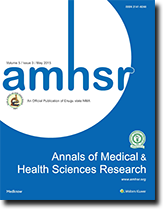

Aim: The objective of this study is to define the common causes of both peripheral and visceral lymphadenopathy in Owerri and compare with the previous studies. Methodology: The surgical day books, the histology request, and report forms, as well as the operative findings, were used to retrieve the biodata of patients, history, clinical and histologic diagnoses. Results: The mean age was 37.41 years with age range of 2 to 84 years. The peak age of lymphadenopathy was in the 11-20 years age group. There was a female preponderance giving a male to female ratio of 1:1.2. The commonest disease involving the lymph nodes in this study is metastatic carcinomas which constituted 50% (28 cases). The second commonest lesion was reactive lymphoid hyperplasia which contributed 17.86% (10/56), tuberculous lymphadenitis 14.29% (8/56), the lymphomas constituted 8.93% (5 cases), dermatopathic lymphadenitis and Kikuchi-Fujimoto disease (KF) contributed 3.57% (2 cases) and a single case (1.79%) of chronic non-caseating granulomatous inflammation. Conclusion: Contrary to the previous belief that infectious and inflammatory diseases were the commonest cause of lymphadenopathy in the developing world, this study demonstrated that malignant neoplastic disease is taking a pride of place in lymphadenopathy in our environment.
Select your language of interest to view the total content in your interested language
Annals of Medical and Health Sciences Research received 24805 citations as per google scholar report
 The Annals of Medical and Health Sciences Research is a monthly multidisciplinary medical journal.
The Annals of Medical and Health Sciences Research is a monthly multidisciplinary medical journal.